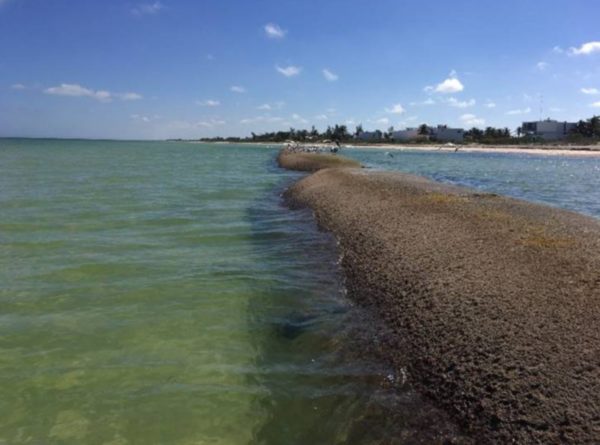Las Coloradas, San Crisanto, Chelem and Chuburna Puerto, some of the areas most affected by the phenomenon of beach erosion on the northern coast of Yucatan, recovered between five and eight meters of beach in the last two years with the use of geotube systems installed by the company Axis, Ingeniería y Medio Ambiente certified by the Scientific Research Center of Yucatán (CICY), with the support of the Innovation Stimulus Program (Programa de Estímulo en Innovación: PEI) of the National Council of Science and Technology (Conacyt).
In 2012, the Yucatecan company Axis, Ingeniería y Medio Ambiente began a project to rebuild eroded beaches on the northern coast of Yucatán through the installation of geotubes, tubular materials made from polymers, which length can range from six to 10 meters, and its diameter ranges from 1 to 1.5 meters.
In an interview for the Conacyt Information Agency, Carlos Rolando Ríos Soberanis, research professor attached to the CICY, pointed out that the coasts of Yucatan have a marine topography that allows the easy application of geotubes, since the current dynamics of the Gulf of Mexico have an effect in a diagonal direction on the sandy sediment.
The geotubes are installed through a dredging process in which sand is extracted from the seabed. Usually, the northern winds come with more energy during the afternoon, bringing up the tide.
When hitting the crest of the geotubes (the upper part), their energy decreases and only a part of the waves passes to the other side, where they deposit the sand.

Experimental geotube installed at Las Coloradas, in the Yucatecan northern coast, the CICY will evaluate its efficiency. (Photo: Diario de Yucatán)
The geotubes are usually placed one to three meters away from the shore, taking into account local studies on the damage caused by erosion. Eventually, the geotubes are filled between 80 and 90 percent (never 100 percent) so its shape acquires an oval aspect and can function as a breakwater.
Source: Diario de Yucatan

